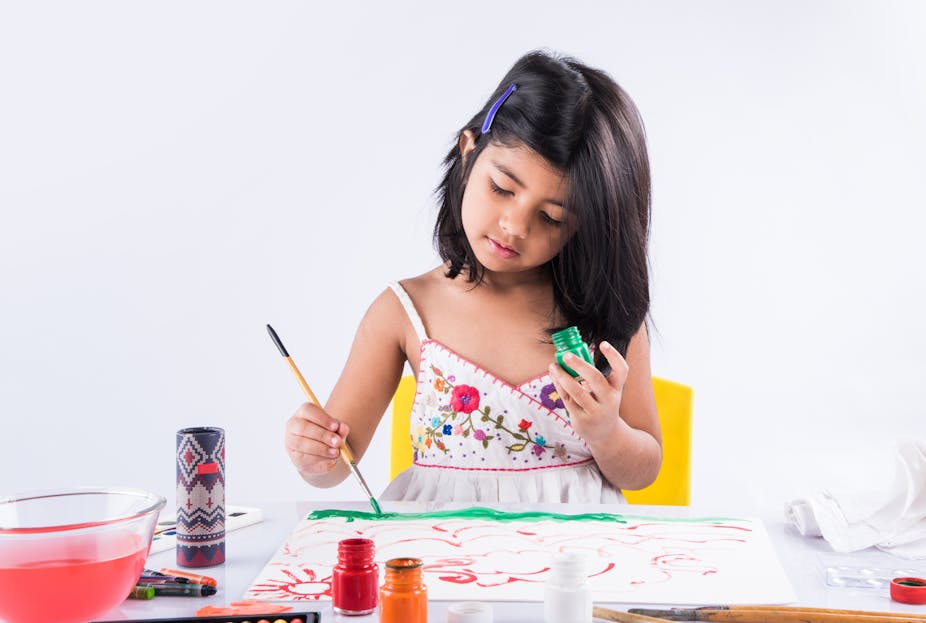There were three keynote addresses at an education conference I attended recently. Each speaker dealt in some way or another with assessment, presenting statistics that highlighted South African pupils’ poor performance - most particularly in maths and science.
The emphasis at such occasions on these subjects is always striking. Art education, the area in which I teach and conduct research, rarely if ever gets a mention. It remains extremely marginalised in schools, with some researchers suggesting that it holds a “secondary status” in many teachers’ minds.
This is particularly strange given that art education can open up avenues for different ways of knowing - for all subjects. These include the aesthetic, scientific, interpersonal, formal and practical modes that can be encountered through the senses, intellect and emotions. Making and appreciating art involves the emotional and mental faculties - and research has proved that this can lead to cellular learning.
This means that an important vehicle for learning and knowledge acquisition is within reach of all school children: quality and meaningful art education. The question in South Africa is how to make this a reality. A great deal of the answer lies with teacher training.
A “second rate” subject
Educationalist Professor Kholeka Constance Moloi has argued that art holds a secondary status alongside “mainstream subjects such as Mathematics and Science”.
This “secondary status” slopes downward because at most primary schools teachers who are trained as generalists are responsible for children’s art education. Research that I have conducted in schools indicates that most of these generalists don’t feel confident about teaching art. Many actually leave art out of their teaching programme. They might teach it, but use prescriptive resource materials or theoretical tasks from text books. This approach doesn’t encourage creativity and that means pupils’ learning or knowledge acquisition in this and other subjects isn’t boosted.
Art - making it, learning about it in an interesting and creative way, or simply looking at it - offers a wide range of fulfilling experiences. This extends and deepens children’s experiences. It strengthens the acuity of their perception and enhances their critical abilities.
Japanese philanthropist Professor Haruhisa Handa has given huge financial support to the arts. Why? Because, he told a South African newspaper:
if we participate in the Arts, we will be motivated and have a reason to live and as we grow older, our lives will be more and more enriched.
In an educational context, young people will experience this fulfilment and enjoyment as part of their school careers, making the entire experience more positive. Happy pupils have been proved to learn better and have a more productive disposition towards schoolwork.
Art education in South Africa
It’s not far-fetched to suggest that improving the quality of art education in lower income and under-performing schools can lift the general standard of education. Research from the US has shown that academic performance progresses significantly in schools where art is well taught and creates a positive, empowering learning environment. This makes school a pleasant place where children really want to learn.
This is encouraging for a country like South Africa, where many schools in the public sector lack even basic resources. At the moment, art education falls under the broader subject of “creative arts” in the primary and secondary school curricula. It is compulsory for all pupils up to Grade 9.
After that, there is little or no formal emphasis on the subject.
It is at the level of teacher training that things really become dire. Currently, the government only awards teacher training bursaries to students who choose technology, the sciences or mathematics as majors. That means fewer teaching graduates are majoring in art - and it follows that many schools don’t have suitably qualified teachers to facilitate quality art education.
Policy must be revised
There have been a few attempts by the government to make the arts more attractive as a career option for prospective teachers. One of these was a ministerial charter to promote the Humanities. It was launched in 2012 and presented at various university campuses.
But nothing more has been heard about it and the charter hasn’t affected the policy on bursaries for teacher training. It’s strongly recommended that the policy be revised because this would allow more teaching students - especially those from poorer communities - to choose art as a major. This would break the cycle of neglect that exists in many schools when it comes to the teaching of art.

